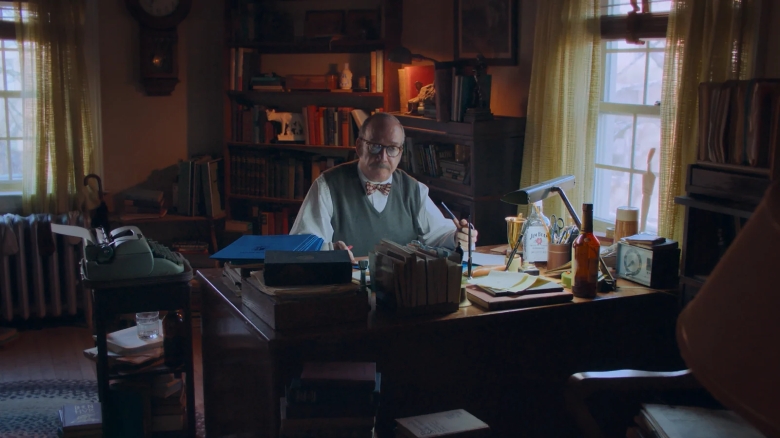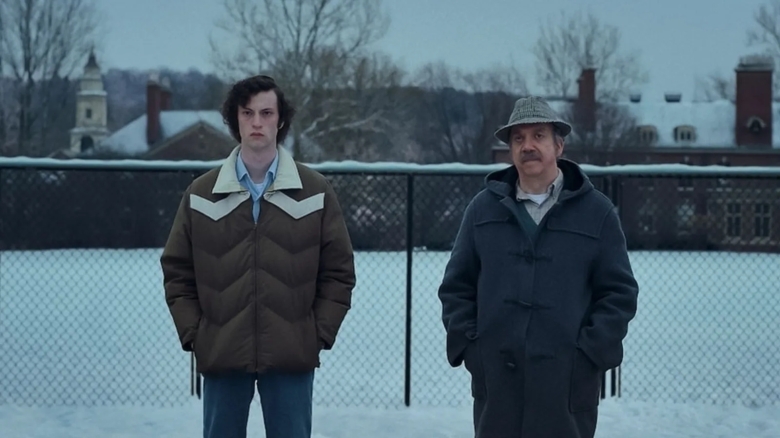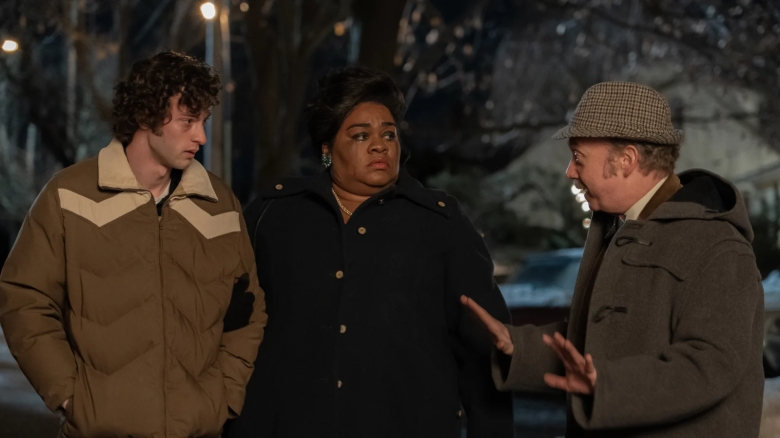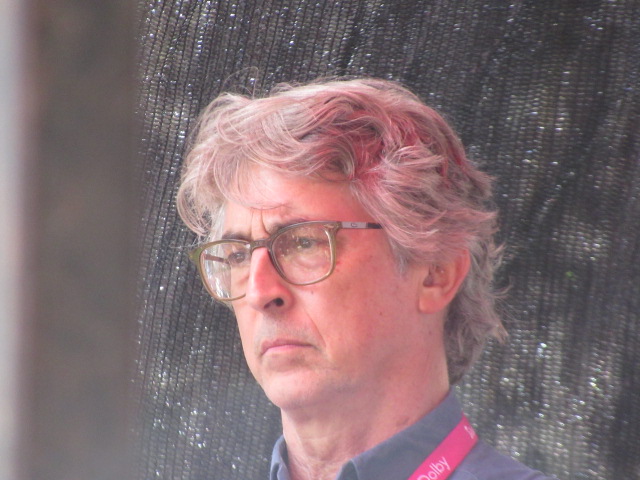It was an exceptional year for films at the 50th Telluride Film Festival, held in a former mining town in Colorado. As always films were not announced in advance, but as in previous years, past selections have been so impressive that passes quickly sold out.

Telluride (c) Ed Scheid
In the laid-back atmosphere of Telluride, you can often have unexpected conversations with filmmakers from around the world. I hade a chat with Werner Herzog when both of us were walking to the Tribute to Wim Wenders that Herzog would host. I commented to Herzog on the excerpt from his forthcoming memoir on his time in Pittsburgh, where I live, and how he based film characters on people he stayed with.
At his memorable Tribute, Wenders spoke of his first meeting with fellow German filmmaker Herzog. Wenders was in film school. Herzog was three years older, and had already made a film. Herzog told the students to leave film school, “break rules” and make movies.

Wim Wenders at outdoor panel at Telluride (c) Ed Scheid
Wenders’ documentary “Anselm” was part of his Tribute, an enthralling documentary on German artist Anselm Kiefer. The 3D effect is used to advantage in Kiefer’s large layered paintings and installations. Footage shows Kiefer creating his art with a variety of sources including paint, lead and clothing. The film conveys how Kiefer’s art relates to Germany’s disturbing past.

“Anselm”
Wenders’ other film shown, “Perfect Days” was my top film from Telluride. Koji Yakusho, who was chosen Best Actor at Cannes, gives an outstanding performance in this deeply affecting masterwork. Yakusho portrays a toilet cleaner in Tokyo. Yakusho’s face conveys deep emotions. His character is contented as he goes about his daily routine. A visitor from his family reveals details from his past, building to an unforgettable conclusion.

Koji Yakusho (left) in “perfect Days”
Another Tribute was to Greek filmmaker Yorgos Lanthimos (“The Favourite”) with “Poor Things” starring Emma Stone. The other Tribute was to Italian director Alice Rohrwacher (“Happy as Lazzaro”) with “La Chimera” which continues her interest in people on the fringes of Italian society. It is an absorbing film about an Englishman, well-played by Josh O’Connor (“The Crown”), working with a gang of tomb raiders to steal buried artifacts for further sale.

Josh O’Connor (center) in “La Chimera”
“Anatomy of a Fall” received the Palme d’Or, the top prize at Cannes. In the beginning of this deservedly acclaimed film co-written and directed by Justine Triet, a vision-impaired son finds his father dead in the snow. A year later, the wife and mother, superbly played by Sandra Huller (“Toni Erdmann”), is put on trial for murder, leading to a gripping courtroom trial that exposes the complexities of the family relationships.

Sandra Huller (center) in “Anatomy of a Fall”
The powerful “Zone of Interest” is one of the most chilling films I have seen. It received the runner-up Grand Jury Prize at Cannes. Masterfully directed by Jonathan Glazer, the film depicts the commandant of Auschwitz and his family living comfortably and contentedly next to the camp. Smoke from the ovens and physical evidence of the camps occur only in the background. Sandra Huller portrays the commandant’s wife.

Sandra Huller (right) in “Zone of Interest”
“Fallen Leaves” is another gem from Aki Kaurismaki with his unique combination of deadpan dialog and expressive faces. The film, which received the Jury Prize at Cannes, conveys the loneliness of two people whose paths cross and begin to build a connection.

“The Holdovers” is Alexander Payne’s skilled version of a 1970s film. An acerbic teacher, a strong fit for Paul Giamatti, is forced to spend winter break with a lone student (Dominic Sessa) whose mother is getting married over Christmas holidays and a cook (Da’Vine Joy Randolph) mourning her son who died in Viet Nam. The cast plays well off of each other. Payne effectively combines humor with poignancy as more about the characters is revealed, without sentimentalizing them.

Alexander Payne at Telluride outdoor panel
In the German “The Teachers’ Lounge.” after a student is suspected of theft, a teacher (Leonie Benesch) uses her own plan to discover the real thief. Tension builds when her actions escalate into a public crisis for her and the school.
Before the actors’ strike, a Tribute was planned for Annette Bening. Her film “NYAD” was screened without the star. Bening gives another award-caliber performance as Diana Nyad, conveying her consuming drive, as in her sixties she attempts the difficult swim from Cuba to Florida, a swim she gave up in her twenties. The film vividly conveys the difficulties and danger of her amazing swim attempt.

Annette Bening in “NYAD”
Actors who made films with independent companies that made agreements with the Screen Actors Guild were able to attend and promote their films. Julia Louis-Dreyfus (“Tuesday”) and Dakota Johnson (“Daddio”) were at Telluride with their latest, as were foreign actors.
Directed and co-written by Ethan Hawke, “Wildcat” is an engrossing view of the sometimes uncomfortably frank Southern writer Flannery O’Connor. Ethan’s daughter Maya Hawke and Laura Linney give superlative performances as O’Connor and her mother. They also play characters in excerpts from O’Connor’s stories, showing how her life was adapted into her writing. After the film I congratulated Maya Hawke and Laura Linney on their multiple performances.

Ethan Hawke at outdoor Telluride panel
“Baltimore” is a suspenseful film drama about an attempted art heist for the IRA in 1974 with an intense performance by Imogen Poots as the mastermind, a British heiress.
“Finally Dawn” is an entertaining film about filmmaking at the Italian studio Cinecitta in the 1950s. The highlight is the shooting of an elaborate epic with a female pharaoh played by Lily James who is quite good as a manipulative diva.
“Tehachapi” is a fascinating documentary directed by French visual artist JR, who co-directed “Faces Places” with Agnes Varda. The film shows how JR, his team, inmates of the California maximum-security prison Tehachapi, and guards collaborated on a giant photograph of the inmates in an open outside area of the prison. This documentary examines the US prison system and movingly shows how some of the prisoners were changed by the art project.
JR created one of his signature large photo sculptures – Agnes Varda peering over the roof of a building on the main street.

Agnes Varda overlooking Telluride
“They Shot the Piano Player” was another documentary, this one animated. The film captures the vitality of the Latin American locations and music, as well as an intriguing mystery as a journalist investigates the disappearance of a celebrated musician.

“They Shot the Piano Player”
The one disappointing Telluride selection was “The Bikeriders”. The film has convincing performances by Jodie Comer and Austin Butler as a biker couple and Tom Hardy as the biker leader and is well-staged by director Jeff Nichols, but the plot is a repetition of biker gang fights.
At the Labor Day Picnic in the Town Park, I was standing next to Wim Wenders. I told him how appropriate the 3D effect in his documentary “Anselm” was for the work of Anselm Kiefer. I added that for me “Anselm” was “a film by a favorite director on a favorite artist.” Wenders reached out his hand for me to shake.
Future posts will cover Telluride films in more detail along with comments from the filmmakers’ discussions,
















